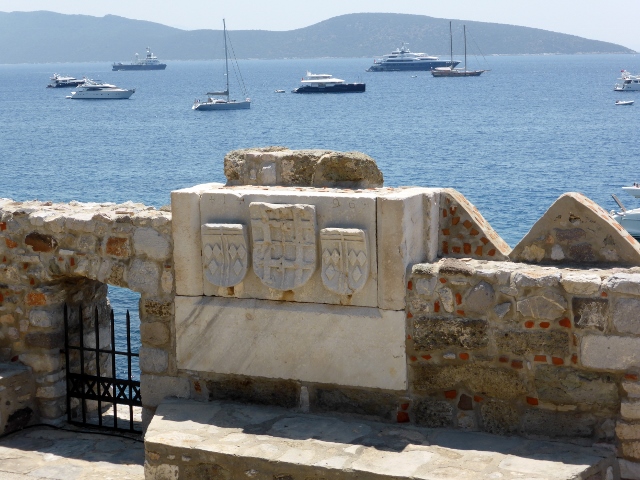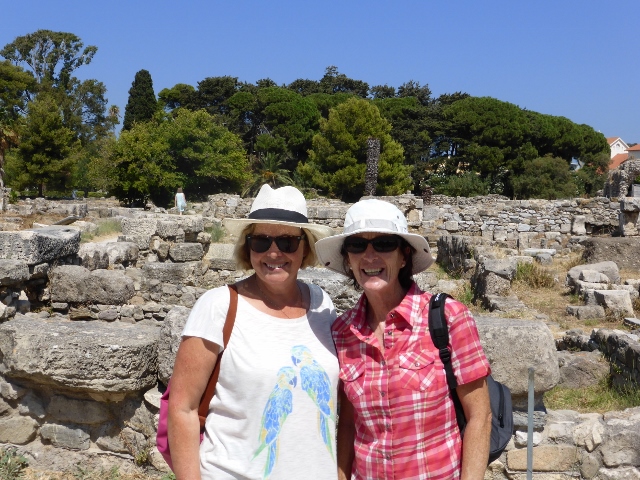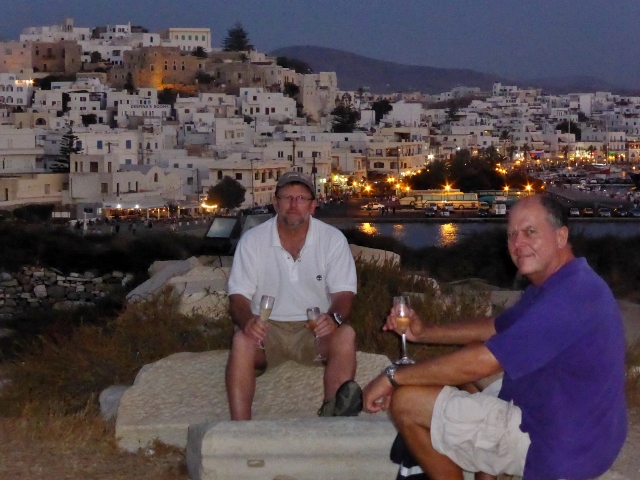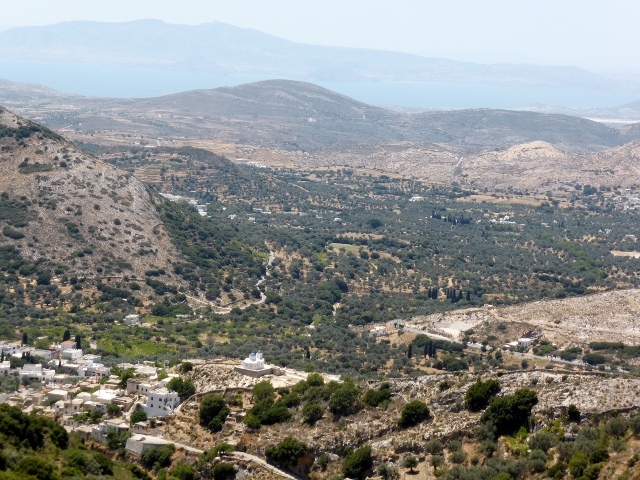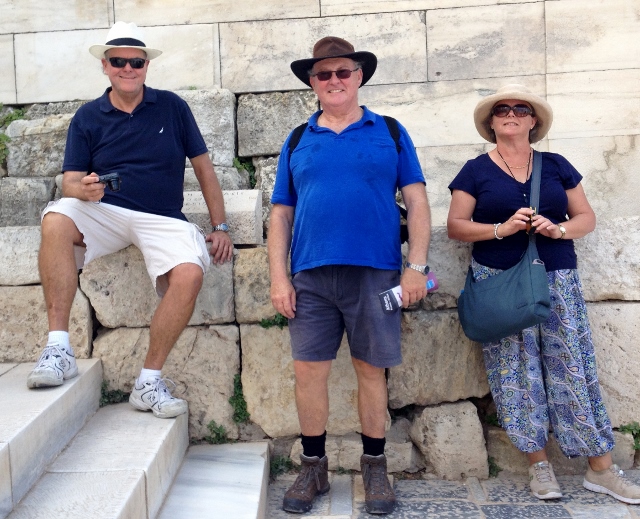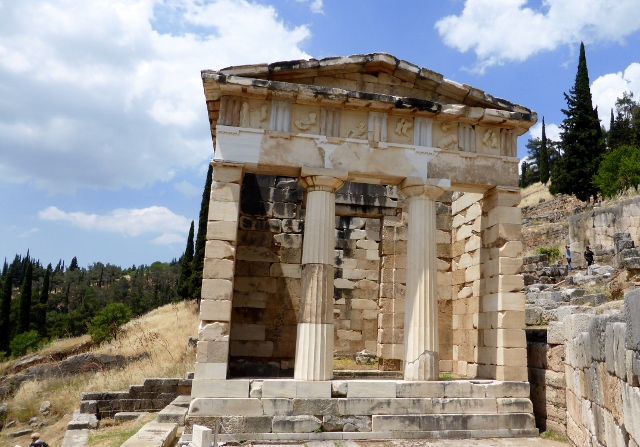James and I decided to take a side trip to Rhodes. The islands of Kos, Symi and Rhodes are just off the south-western Turkish coast and they are close, a just short ferry trip away.
Rhodes was a completely different Greek island, even though the ancient Greeks and Romans had preceded us there and left ruins to be be seen. What was different is that Rhodes is the oldest medieval city in western Europe. The medieval architecture and history of Rhodes Town and its citadel dominate the landscape and our imaginations.

We visited the Palace of the Grand Masters and learned that the exhibitions contained within were put together in 1993 as the 2,400th anniversary of the foundation of the city of Rhodes in 408 BC. Many Roman mosaics were collected from Kos and other Greek islands and built into the palace, looking like Turkish Rugs on the marble floors.

The Knights of Rhodes were founded in the 11th Century by merchants from Amalfi. As a group knights were made of Roman Catholic men usually of noble birth from Italy, France, England, Provence, Spain, Auvergne (France) and Germany. The Knights were also famous for their hospitals, so if you were ill or wounded you would be brought to the nearby hospital for care.
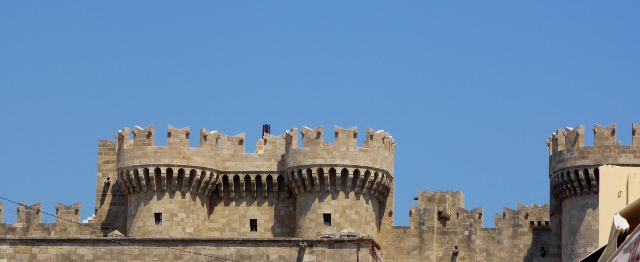
There is also a street called the Street of the Knights, where the knights lived and met. Each country had their own building on the street.
Turks lived in Rhodes during the reign of the Knights and after Suleiman finally conquered Rhodes . Minarets, fountains and gardens imprinted the Turkish presence on Rhodes Town.

The hospital of the Knights of St. John was a very evocative building, It was all too easy to imagine the injured and ill, so far from home and looking up at the stone ceilings, listening to screams and moans, wondering if you would ever see your home again. To add to the sinister feeling of this old colonnade, the area contains tombstones of the knights, confirming that many never did see their homes again.

The Colossus of Rhodes was not to be seen but Mandraki Harbour is still beautiful and you can almost imagine sailing underneath the Colossus into Mandraki Harbour.

